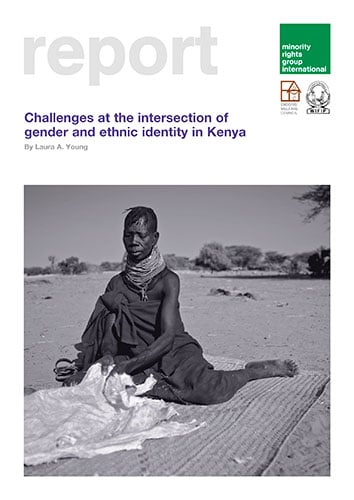
Challenges at the Intersection of Gender and Ethnic Identity in Kenya
Minority and indigenous women in Kenya are discriminated against on multiple levels; they are targeted because of their identification with a minority or indigenous group, and as women – both by cultural practices within their own community and because of gender discrimination more widely.This report examines the challenges and the new opportunities that have emerged with the passing of the new Constitution in 2010. The goal of the report is to reflect the voices and experiences of women from diverse minority and indigenous communities in Kenya.For hunter-gatherer women, many of whom have been displaced and forced to become squatters, community land rights are a primary concern. They view their lack of opportunities, basic services and education for girls as a direct result of their displacement.For pastoralist women, insecurity and conflict in areas where they live has a disproportionate impact on them. Cultural practices that are harmful to girls, such as female genital mutilation and early marriage, reduce girls’ access to education and entrench women’s poverty.For fisher peoples, environmental degradation and collapsing fish stocks are major fears. Women from these communities expressed their frustration at traditional gender roles that place much of the responsibility for meeting the family’s basic needs on women.While there is strong leadership from individual women in many of the minority and indigenous communities described in this report, the majority of women face ongoing violations of their human rights. Trapped in a cycle of poverty that they attribute directly to decades of marginalization, they fear that they and their children will not be able to take advantage of gains in the new Constitution.This report highlights actions identified by minority and indigenous women that should be taken by the government and other actors to support women’s empowerment and participation in the decision-making processes that directly affect them.